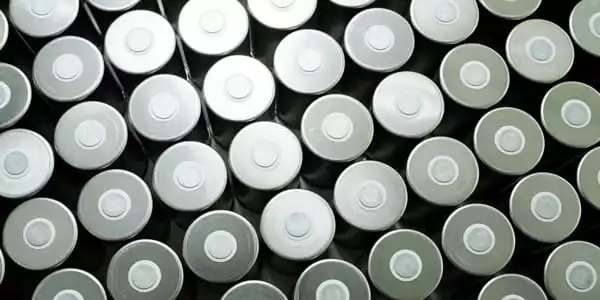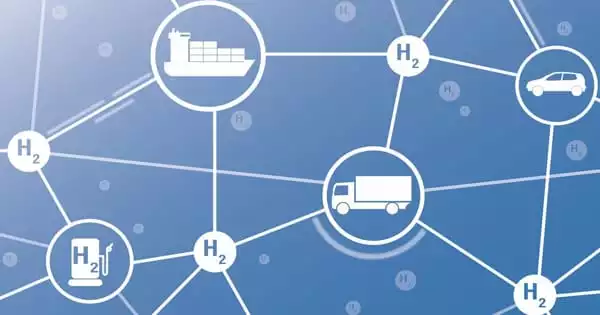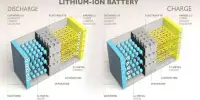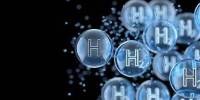Cornell University researchers discovered that a nitrogen-doped carbon-coated nickel anode can catalyze an important chemical in hydrogen fuel cells at a quarter of the cost of the precious metals now utilized. The new finding could hasten the broad adoption of hydrogen fuel cells, which hold enormous promise as efficient, clean energy sources for vehicles and other purposes. It is the latest in a series of discoveries made by the Héctor D. Abrua lab in their ongoing search for active, affordable, and long-lasting catalysts for application in alkaline fuel cells.
The main idea behind hydrogen fuel cells is that they generate electricity and heat by using hydrogen gas and oxygen from the air, and the energy they generate is enough to power huge automobiles. Each cell has two electrodes, one for hydrogen and one for air (oxygen), as well as a catalyst for splitting hydrogen atoms into protons and electrons. A flow of energy is created because each subatomic particle travels a different path to the other electrode via the catalyst.
“This study advances the use of efficient, clean hydrogen fuel cells in place of fossil fuels,” said Abrua, a Cornell University professor of chemistry and chemical biology.
The results were published in “A Completely Precious-Metal-Free Alkaline Fuel Cell With Enhanced Performance Using a Carbon-Coated Nickel Anode,” in the Proceedings of the National Academy of Sciences.
This study advances the use of efficient, clean hydrogen fuel cells in place of fossil fuels. The adoption of this new anode would drastically cut prices, allowing the use of alkaline fuel cells in a wide range of applications.
Héctor D. Abrua
Expensive precious metals like platinum are now required in hydrogen fuel cells to efficiently catalyze the reactions that generate power. Although alkaline polymer electrolyte membrane fuel cells (APEMFCs) allow nonprecious metal electrocatalysts to be used, they lack the performance and durability required to replace precious-metal-based systems.
The hydrogen oxidation process (HOR) and the oxygen reduction reaction (ORR) in a fuel cell generate electricity (OOR). According to Abrua, platinum is a model catalyst for both reactions since it catalyzes them efficiently and is durable in the acidic environment of a PEM fuel cell.

But what about other materials?
Recent tests with nonprecious-metal HOR electrocatalysts encountered two key obstacles, according to the researchers: low intrinsic activity due to excessive hydrogen binding energy and poor durability due to metal oxide deposition.
To address these issues, the researchers created a nickel-based electrocatalyst with a 2 nm nitrogen-doped carbon shell. The anode (where hydrogen is oxidized) catalyst in their hydrogen fuel cell is made of a solid nickel core surrounded by a carbon shell. When combined with a cobalt-manganese cathode (which reduces oxygen), the resulting fully precious-metal-free hydrogen fuel cell generates more than 200 milliwatts per square centimeter.
According to Abrua, the presence of nickel oxide species on the surface of the nickel electrode significantly delays the hydrogen oxidation reaction. The nitrogen-doped carbon coating protects the surface and improves HOR kinetics, making the reaction faster and more efficient. Furthermore, the presence of graphene on the nickel electrode limits the production of nickel oxides, resulting in electrodes with significantly increased lifetimes. These electrodes are also far more resistant to carbon monoxide, which quickly corrodes platinum.
“The adoption of this new anode would drastically cut prices, allowing the use of alkaline fuel cells in a wide range of applications,” Abrua said.
In contrast to gasoline-powered generators, which emit carbon dioxide and other greenhouse pollutants, hydrogen fuel cell waste includes solely clean water. Conventional vehicle designs that use hydrogen fuel cells do not collect water waste, instead of allowing it to flow out of the vehicle onto the road. While this is the simplest and cheapest method, it is extremely wasteful in light of the fact that fresh water is becoming increasingly scarce.
It will be possible to produce and collect clean water, which can be utilized for anything from cooling industrial operations to toilets, by installing fuel cells in homes and buildings rather than in automobiles. Households can then rely on hydrogen fuel cells not only to power their electric vehicle and partially power their domestic appliances but also as a supply of clean, drinkable water. Water use is frequently highest during the driest months, but because consumers drive their automobiles all year, water will be produced continuously, relieving some of the load on natural water reservoirs.
















